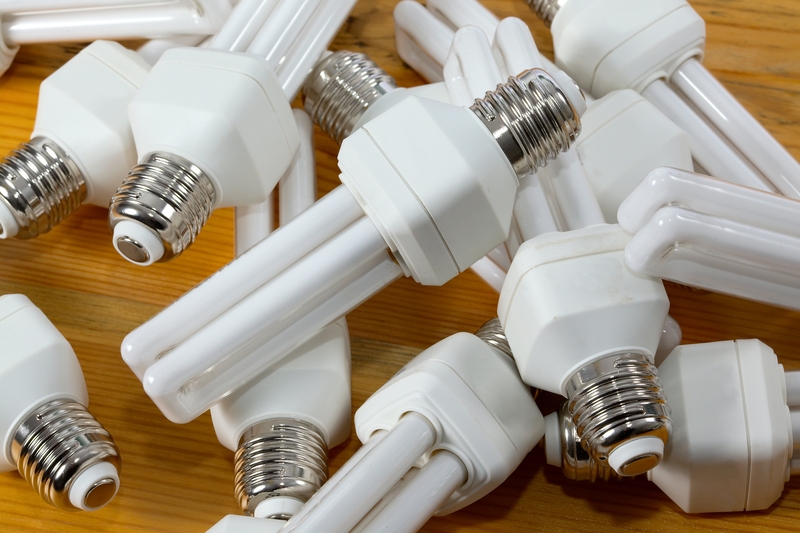Exploring Sustainable Packaging and Cardboard Recycling
Sustainable packaging and cardboard recycling are at the forefront of the modern movement toward environmental responsibility. As environmental awareness grows and regulations tighten, businesses and individuals alike are seeking innovative solutions to reduce waste and lessen the ecological footprint of packaging. From the innovative use of recycled materials to the development of compostable options, sustainable packaging is transforming the way we think about consumption and waste. This article dives deep into the world of sustainable packaging and cardboard recycling, exploring their importance, ongoing advances, key benefits, and actionable strategies.
Understanding Sustainable Packaging
Sustainable packaging refers to packaging methods and materials that have minimal environmental impacts and a reduced ecological footprint. The main idea is to create packaging solutions that are resource-efficient, recyclable, compostable, or reusable. This shift from traditional packaging practices is crucial -- especially as the world faces mounting waste and pollution issues.
Main Goals of Sustainable Packaging
- Reducing resource consumption: Using fewer raw materials and energy during production.
- Decreasing waste generation: Designing packaging that can be reused, recycled, or safely composted.
- Lowering carbon emissions: Ensuring packaging processes contribute as little as possible to greenhouse gas emissions.
- Enhancing recyclability: Selecting materials and designs that are easy to collect, sort, and process through recycling systems.
By integrating sustainable packaging solutions into product lifecycles, businesses and consumers can significantly lessen their environmental impact.

The Rise of Cardboard in Eco-Friendly Packaging
Cardboard, particularly corrugated cardboard, has emerged as a frontrunner in the sustainable packaging movement. Its wide availability, relative strength, and eco-friendly characteristics have made it indispensable across numerous industries.
Why Cardboard is a Sustainable Packaging Material
- Renewable resource: Cardboard is made primarily from wood pulp, which can come from sustainably managed forests.
- High recyclability: Most cardboard is recyclable and can be processed into new packaging materials or other paper products.
- Biodegradable: Cardboard naturally breaks down over time through composting, posing minimal harm to ecosystems.
- Lightweight yet strong: Its structure provides protection for products without unnecessary bulk or weight.
With the global surge in online shopping and shipping, the demand for sustainable cardboard packaging solutions continues to grow -- further highlighting the need for efficient recycling and repurposing processes.
The Life Cycle of Cardboard Packaging
Understanding how cardboard moves from production to disposal and recycling provides valuable insight into its sustainability profile.
1. Production
Cardboard is manufactured from cellulose fibers, primarily sourced from trees. The pulp is processed, formed into sheets, and converted into boxes or other packaging shapes.
2. Usage
After production, cardboard packaging is used to protect and transport all kinds of products -- from electronics to fresh produce.
3. Collection
Once packaging has served its initial purpose, it enters the waste stream. Cardboard can be easily separated from other materials, especially when kept clean and dry.
4. Recycling
Collected cardboard is sent to recycling centers where it's shredded, pulped, and processed into new paper products or packaging.
5. Repurposing
Recycled cardboard is reintroduced as new packaging or even upcycled into alternative products, thus extending the material's lifecycle and reducing the need for virgin pulp.
Environmental Benefits of Cardboard Recycling
Cardboard recycling delivers a multitude of environmental advantages, all of which contribute to a healthier and more sustainable planet:
- Conserves natural resources: Recycling reduces the demand for fresh wood pulp, helping protect forests and biodiversity.
- Reduces landfill waste: Cardboard is one of the most voluminous waste types in landfills. Recycling dramatically cuts this burden.
- Lowers greenhouse gas emissions: Manufacturing recycled cardboard uses less energy and emits fewer pollutants compared to using raw materials.
- Minimizes water and energy usage: Recycling paper products requires significantly less water and power than creating them from scratch.
Making recycling a regular habit not only supports the circular economy but also directly benefits the environment and society as a whole.
Innovations in Sustainable Packaging Materials
While cardboard is a key player in the eco-friendly packaging sector, ongoing innovation is crucial for greater sustainability. Here are some materials gaining traction:
- Bioplastics: Derived from renewable sources like corn starch or sugarcane, bioplastics can break down more safely than conventional plastics.
- Mushroom packaging: Made from mycelium and agricultural waste, this material is fully compostable and forms a strong protective packaging around products.
- Edible packaging: Some companies are experimenting with packaging that doubles as a food product, thus eliminating waste entirely.
- Pulp and molded fiber: These are used in trays and containers commonly found in take-out and fresh produce packaging, offering a biodegradable alternative to polystyrene foam.
- Recycled-content films and papers: Advances in technology are allowing more recycled material to be incorporated into high-performance packaging films and papers.
With ongoing research and investment, the future of green packaging solutions looks both promising and ever-evolving.
How Businesses Benefit from Sustainable Packaging
For companies, the switch to environmentally responsible packaging isn't just about compliance; it presents tangible business benefits:
- Improved brand image: Consumers increasingly demand ethical practices. Sustainable packaging helps build trust and loyalty among eco-conscious buyers.
- Regulatory compliance: Many countries and regions now have strict regulations regarding packaging waste and recyclability. Sustainable options ensure businesses meet these requirements.
- Cost savings: Over time, using recycled materials and minimizing packaging footprint can lower material, production, and waste management costs.
- Innovation opportunities: Companies that lead in sustainable packaging innovation can distinguish themselves and tap into new markets.
- Reduced risk: Lower reliance on virgin materials shields a company from fluctuating raw material prices and resource scarcity.
Ultimately, investing in sustainable packaging and efficient recycling practices strengthens both planetary and business health.
Cardboard Recycling: How It Works
Cardboard recycling is remarkably efficient when done correctly. Understanding the process is key to maximizing the benefits:
Collection and Sorting
Businesses and households collect used cardboard such as shipping boxes and packaging inserts. At recycling centers, these items are sorted to remove contaminants like plastic lamination, tapes, and other non-paper materials.
Shredding and Pulping
Once sorted, the cardboard is shredded into small pieces and mixed with water to create a slurry or pulp. This separates the fibers for reuse.
De-Inking and Filtering
If necessary, the pulp is filtered to remove inks, adhesives, and any remaining undesired materials, resulting in cleaner fibers for the next stage.
Reforming and Manufacturing
The clean pulp is formed into new sheets, dried, and rolled for transportation. Depending on the end use, it may be processed further to create boxes, paperboard, or other products.
Distribution and Reuse
The recycled cardboard is put back into the supply chain, ready for another lifecycle as packaging or other everyday items.
Challenges in Cardboard Recycling
Despite its many advantages, cardboard recycling faces several hurdles:
- Contamination: Food residues, oils, and non-paper additives can make recycling difficult or impossible.
- Downcycling: Each cycle shortens fiber length, resulting in lower-quality paper over time. Blending with virgin fibers is often necessary for strength.
- Collection gaps: Infrastructure may be lacking in some areas, reducing the volume of cardboard that can be effectively recycled.
- Market volatility: Prices for recycled cardboard fluctuate, which can impact recycling program sustainability.
By addressing these challenges through education, better design, and investment in recycling infrastructure, the impact and efficiency of cardboard recycling can be significantly improved.
Tips for Enhancing Cardboard Recycling at Home and at Work
To make the most of recycling programs, consider these best practices:
- Keep cardboard dry and clean: Oil, food, and moisture contaminate recycling streams and can ruin entire batches.
- Remove any non-paper materials: Tapes, labels, and plastic windows should be taken off before recycling cartons or boxes.
- Flatten boxes: This saves space in recycling bins and makes transport more efficient.
- Avoid over-packaging: Choose or advocate for products with minimal, recyclable packaging.
- Educate others: Spread awareness about the importance of cardboard and sustainable packaging recycling in your community or workplace.
The Circular Economy: A Model for Sustainable Packaging
The concept of a circular economy reimagines how resources are used and kept in circulation for as long as possible. In this model, products -- including packaging -- are designed to be reused, refurbished, or recycled, reducing waste to a minimum. Cardboard recycling and sustainable packaging are quintessential examples of the circular economy in action.
- Design for recycling: Creating cardboard packaging that is easy to separate and process supports the circular model.
- Incentivize reuse: Businesses can offer returnable or refillable packaging options to reduce single-use packaging waste.
- Close the loop: Using post-consumer recycled materials in packaging ensures resources continually circulate.
Through these practices, sustainable packaging does more than reduce environmental harm -- it actively contributes to a restorative, regenerative economic system.

Looking Ahead: The Future of Sustainable Packaging and Cardboard Recycling
The future of eco-friendly packaging solutions and cardboard recycling will depend on ongoing innovation, collaboration, and commitment from all sectors:
- Material innovation: Continued research into biodegradable, compostable, and upcycled materials.
- Technology advancements: Automated sorting, AI-driven contamination detection, and improved recycling infrastructure.
- Legislative incentives: Policies that encourage extended producer responsibility and reward sustainable choices.
- Consumer engagement: Education and outreach to drive higher recycling rates and support for sustainable products.
By embracing the principles of sustainability and responsible resource management, the packaging industry can play a pivotal role in protecting our planet for generations to come.
Conclusion: Taking Action for a Greener Future
Exploring sustainable packaging and cardboard recycling reveals a path toward a cleaner, healthier, and more resilient world. Whether you are a business owner, policymaker, or consumer, there are meaningful steps you can take to support this movement -- from selecting recyclable and compostable packaging to participating in and advocating for robust recycling programs.
Together, by integrating sustainable packaging choices and championing cardboard recycling at every level, we can significantly reduce our collective environmental impact and build a brighter, greener future.